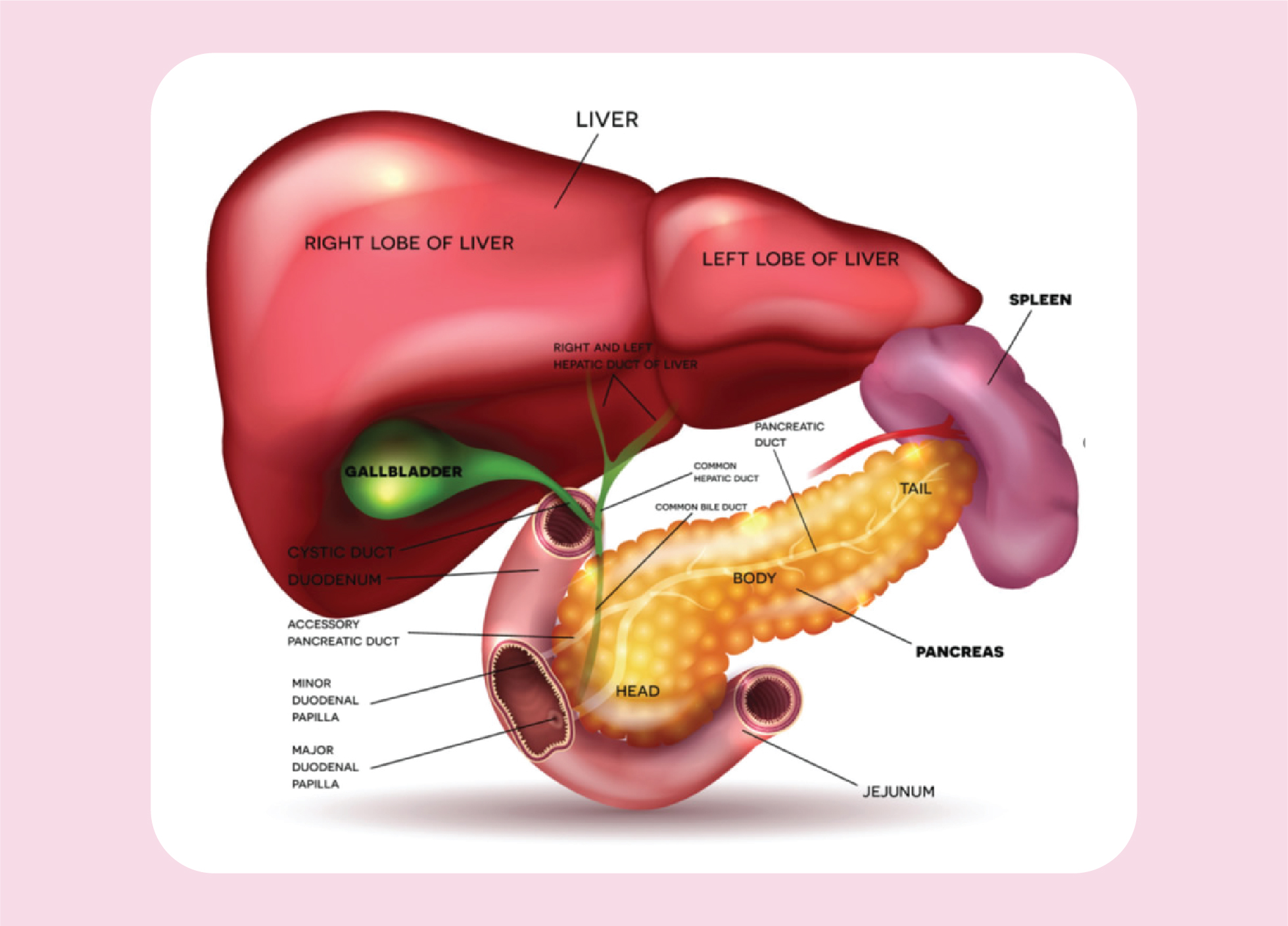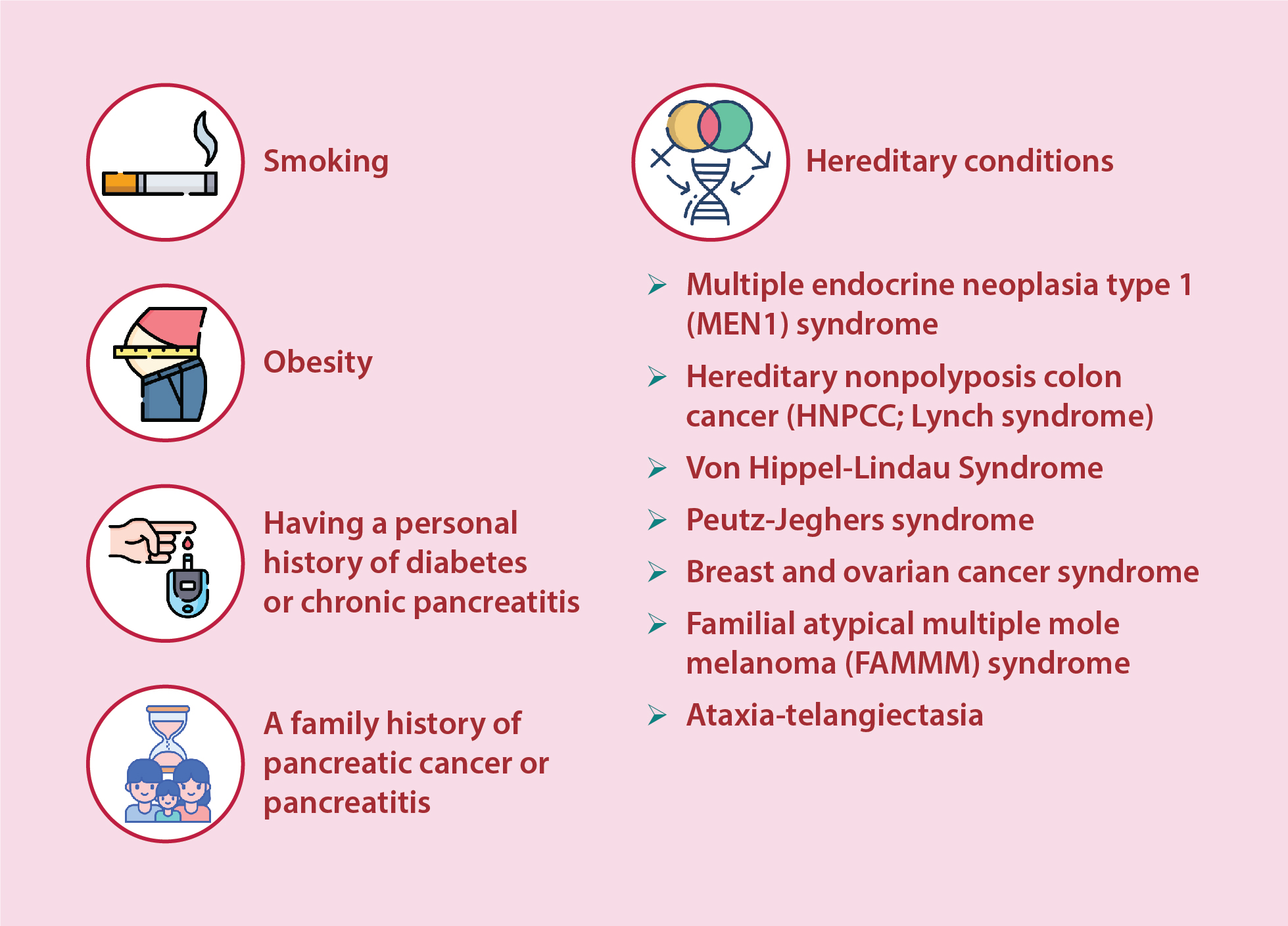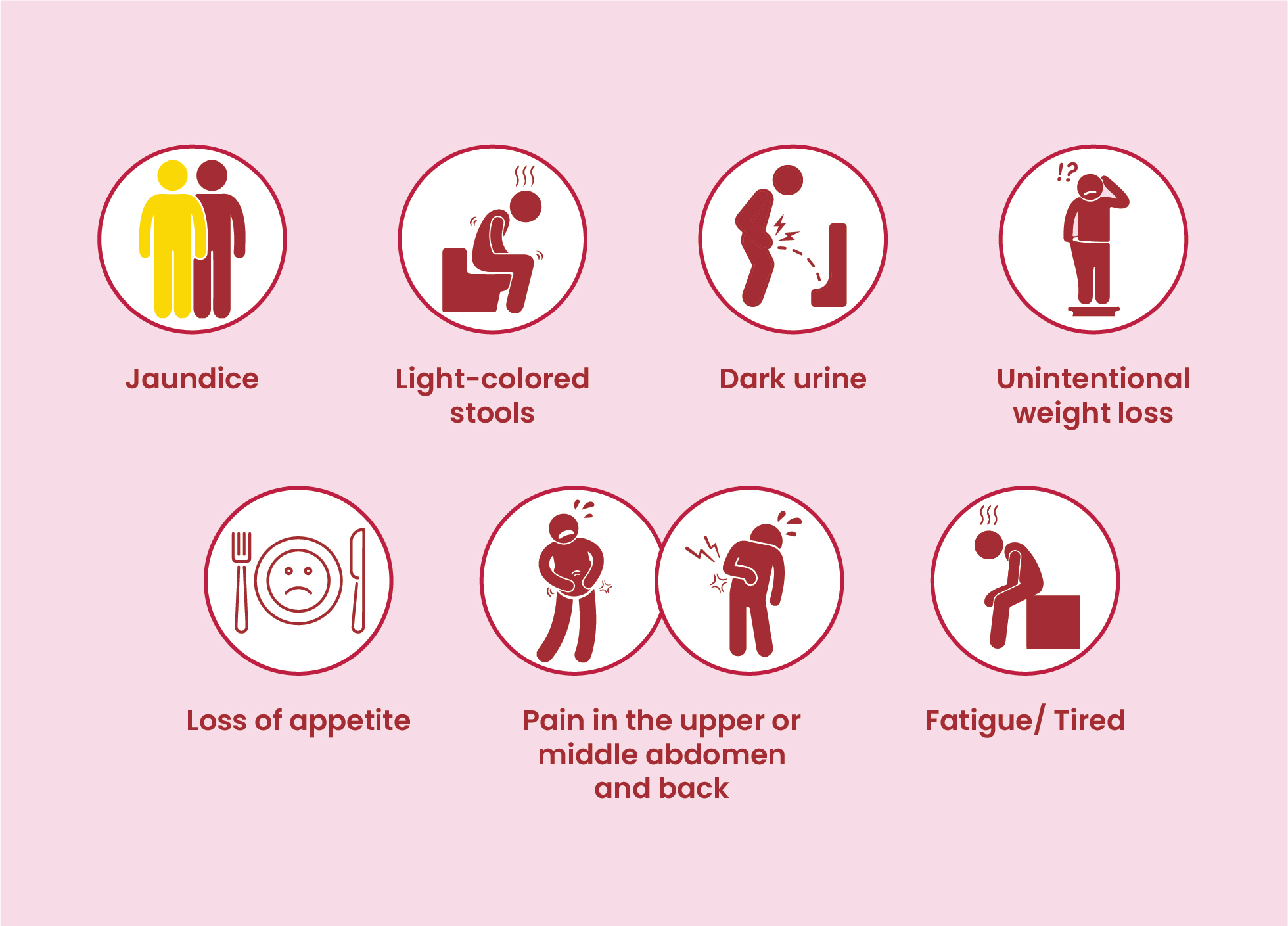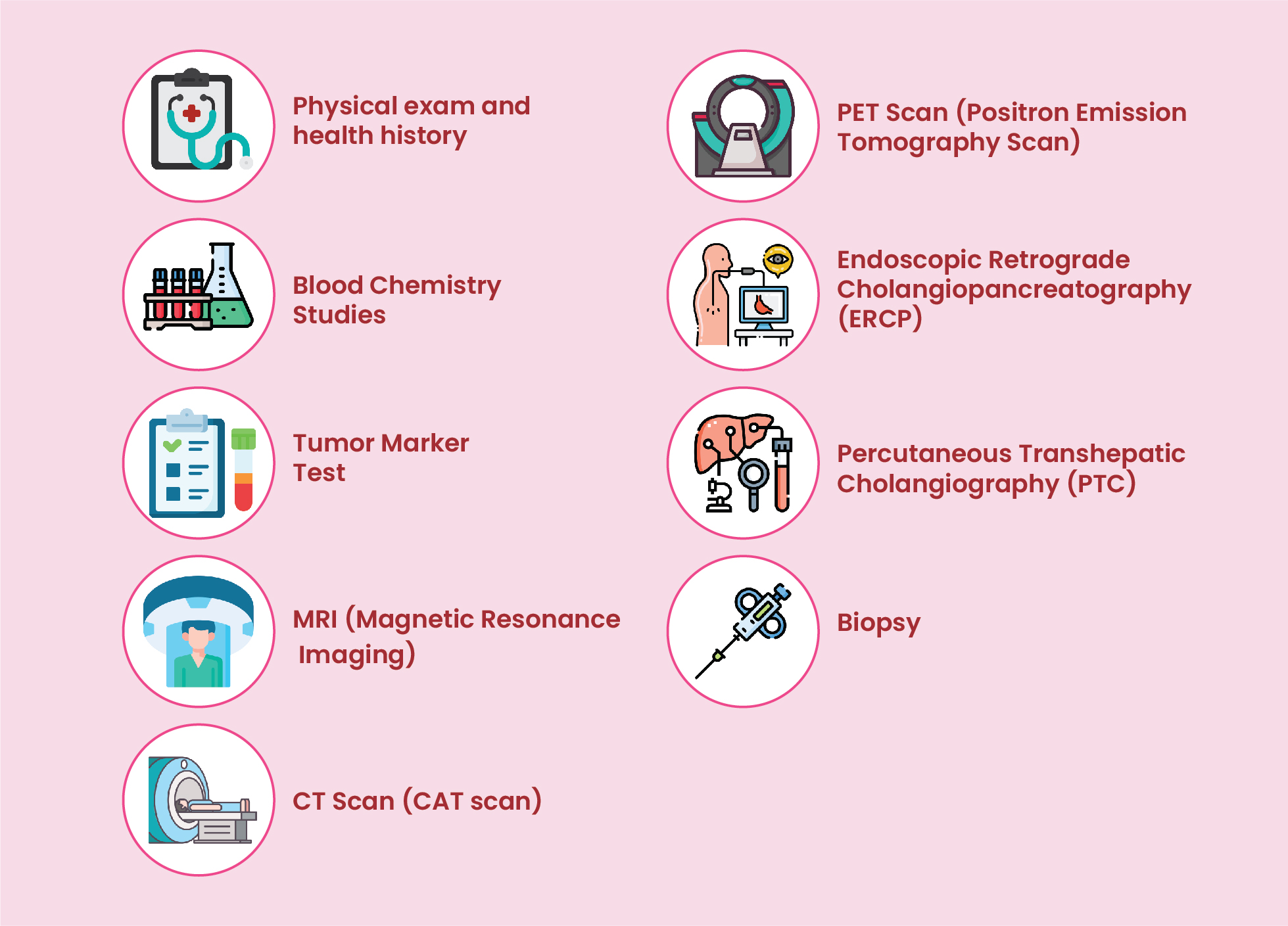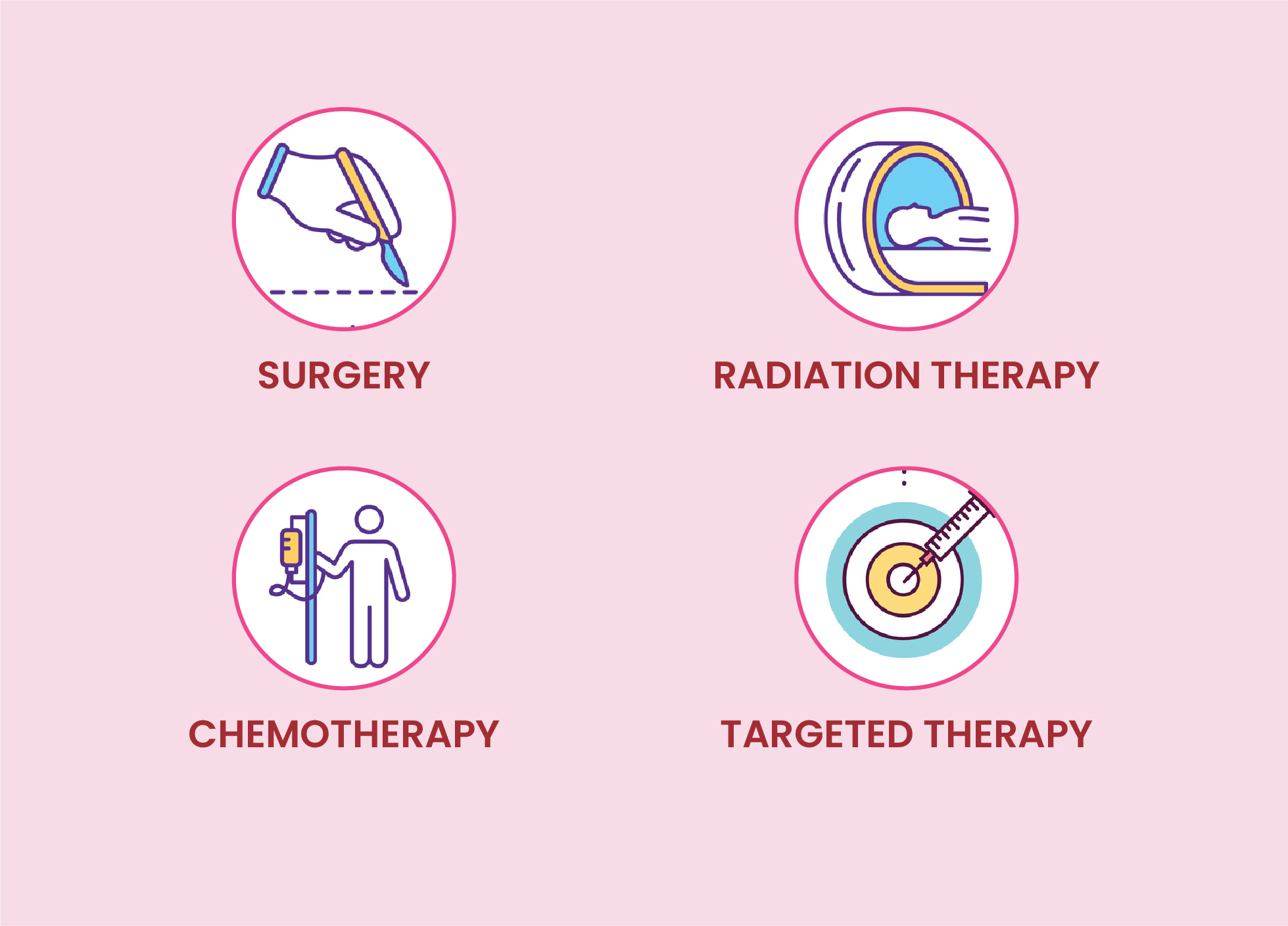Pancreatic Cancer
A 6 inches long gland that resembles as a shape of a thin pear lying on its side is known as Pancreas. The wider portion of the pancreas is called the head, the middle region is called the body and the narrow end is called the tail. The location of the pancreas lies between the stomach and spine.
The cancer which is developed in the tissues of the pancreas is known as Pancreatic Cancer.
Risk Factors
The several risk factors for pancreatic cancer are enlisted below:
- Smoking
- Obesity
- Having a personal history of diabetes or chronic pancreatitis
- A family history of pancreatic cancer or pancreatitis
- Hereditary conditions like:
- Multiple endocrine neoplasia type 1 (MEN1) syndrome
- Hereditary nonpolyposis colon cancer (HNPCC; Lynch syndrome)
- Von Hippel-Lindau Syndrome
- Peutz-Jeghers syndrome
- Breast and ovarian cancer syndrome
- Familial atypical multiple mole melanoma (FAMMM) syndrome
- Ataxia-telangiectasia
Signs and Symptoms
Early signs and symptoms of pancreatic cancer might not be noticeable, however signs and symptoms that show up in the later stages are:
- Jaundice (yellowing of the skin and whites of the eyes)
- Light-colored stools
- Dark urine
- Pain in the upper or middle abdomen and back
- Unintentional weight loss
- Loss of appetite
- Fatigue/ Tired
Diagnosis:
The detection and diagnosis of Pancreatic Cancer is perplexing in early stages because of the following reasons:
- Signs and symptoms in early stages often go unnoticeable.
- Pancreatic Cancer possess signs and symptoms similar to other illnesses.
- Pancreas is located behind other organs such as the stomach, small intestine, liver, gallbladder, spleen and bile ducts.
It is typically diagnosed with tests and procedures that create a picture of the pancreas and its surrounding area.
The several tests and procedures used for diagnosis are:
- Physical exam and health history: A body examination to check for presence of any lumps or anything unusual. A detailed history of patient’s health habits and past illnesses and medication history is also taken.
- Blood Chemistry Studies: Analyzing the sample of the blood for amounts of certain substances such as bilirubin, which is released into the blood by organs or tissues. A higher or lower amount than normal of a certain substance can be an indication of disease.
- Tumor Marker Test: The samples of blood, urine or tissue are analyzed for certain substances such as CA 19-9 and carcinoembryonic antigen (CEA) which are produced by organs, tissues or tumor cells in the body. If increased levels are found in the body, it can certainly indicate a specific type of cancer and these are known as tumor markers.
- MRI (Magnetic Resonance Imaging): A diagnostic technique which uses magnet, radio waves and a computer to produce detailed images of regions inside the body. It is also known as Nuclear Magnetic Resonance Imaging (NMRI).
- CT Scan (CAT scan): A diagnostic technique that produces a detailed image of regions inside the body while capturing images from different angles. The images are produced on a computer linked to an X-ray machine. For clear representation of the images, a dye may be injected into a vein or swallowed. This procedure is known as Computed Tomography, Computerized Tomography or Computerized Axial Tomography.
- PET Scan (Positron Emission Tomography Scan): A type of diagnostic technique to find malignant tumor cells in the body when a small quantity of radioactive glucose (sugar) is injected into a vein. The PET scanner rotates around the body and makes an image of where glucose is being used in the body. Malignant tumor cells are more active and take up more glucose than normal cells, because of which they appear brighter in the picture. When a PET Scan and CT scan is performed simultaneously, it is called as PET-CT.
- Endoscopic Retrograde Cholangiopancreatography (ERCP): ERCP is a procedure where X-ray is used to examine the ducts that carry bile from the liver to the gallbladder and from the gallbladder to the small intestine. At times, pancreatic cancer can cause these ducts to narrow and block or slow the flow of bile, leading to jaundice. A thin, lighted tube known as endoscope is passed through the mouth, esophagus and stomach into the duodenum, which is the first part of the small intestine. A smaller tube, called catheter is inserted through the endoscope into the pancreatic ducts. The ducts are analyzed with the help of an X-ray and a dye which is injected via catheter. If the ducts are found to be blocked, a fine tube is inserted to unblock it. This tube may be left in place to keep the duct open, meanwhile the tissue samples can also be collected.
- Percutaneous Transhepatic Cholangiography (PTC): PTC is a procedure to check the liver and bile ducts with the help of X-Ray. A thin needle is inserted through the skin below the ribs and into the liver. An X-ray is taken once the dye is injected into the liver or bile ducts. A thin, flexible tube known as stent is inserted at times, when a blockage is observed, and it is left in the liver to drain bile into the small intestine or a collection bag outside the body. PTC is performed in cases when ERCP cannot be done.
- Biopsy: To confirm the presence of cancer along with its stage, a biopsy is performed. A biopsy is a procedure where the samples of tissues from the suspected area (here pancreas) is taken and analyzed further. For obtaining samples, a fine needle or a core needle is inserted into the pancreas during an X-ray or ultrasound to remove cells.
Treatment Options:
Several types of treatment options are there for patients with pancreatic cancer, which are mentioned below with elaborative explanation:
-
Surgery:
There are a few types of surgery that can be used to take out the tumor:
- Whipple Procedure: In this surgical procedure, the head of the pancreas, the gallbladder, part of the stomach, part of the small intestine and the bile duct are removed. Enough part of the pancreas is left to produce digestive juices and insulin.
- Total Pancreatectomy: As the name suggests, a procedure where an entire pancreas, part of the stomach, part of the small intestine, the common bile duct, the gallbladder, the spleen and nearby lymph nodes.
- Distal Pancreatectomy: A surgical procedure to remove the body and tail of the pancreas. The spleen may also be removed if cancer has spread to the spleen.
If the cancer has metastasized, the following types of palliative surgery may be done to relive symptoms and improve quality of life:
- Biliary Bypass: This is performed when the cancer blocks the bile duct and the bile is building up in the gallbladder. The gallbladder or the bile duct is the area before the blockage is cut by doctors and sewed to the small intestine to create a new pathway around the blocked area.
- Endoscopic Stent Placement: If the bile duct is blocked by the tumor, a surgery can be performed to put in a stent (a thin tube) to drain bile that has built up in the area. The stent might be placed by the doctor through a catheter that drains the bile into a bag on the outside of the body or the stent may go around the blocked area and drain the bile into the small intestine.
- Gastric Bypass: If the flow of the food is blocked from the stomach by the tumor, the small intestine cam be directly sewn to the stomach, which allows the patient to eat normally.
- Radiation Therapy: A type of cancer treatment that uses high-energy x-rays or different types of radiation to stop the growth of cancer cells or execute them. A machine is used from outside the body to send radiation towards the region which incorporates cancer, this is known as External radiation therapy.
- Chemotherapy: Chemotherapy refers to the cancer treatment which uses drugs to cease the growth of cancer cells, either by destroying the cells or by stopping them from proliferating. The drugs can either be directly injected into a vein or muscle or taken orally, which allows the drug to reach the bloodstream directly and reach cancer cells throughout the body. If more than one anticancer drug is used, it is known as Combination Chemotherapy.
- Targeted Therapy: A kind of cancer treatment where the drugs or other substances are used to recognize and ambush particular cancer cells. The damage caused to normal cells is less by targeted therapies when compared to chemotherapy or radiation therapy.
